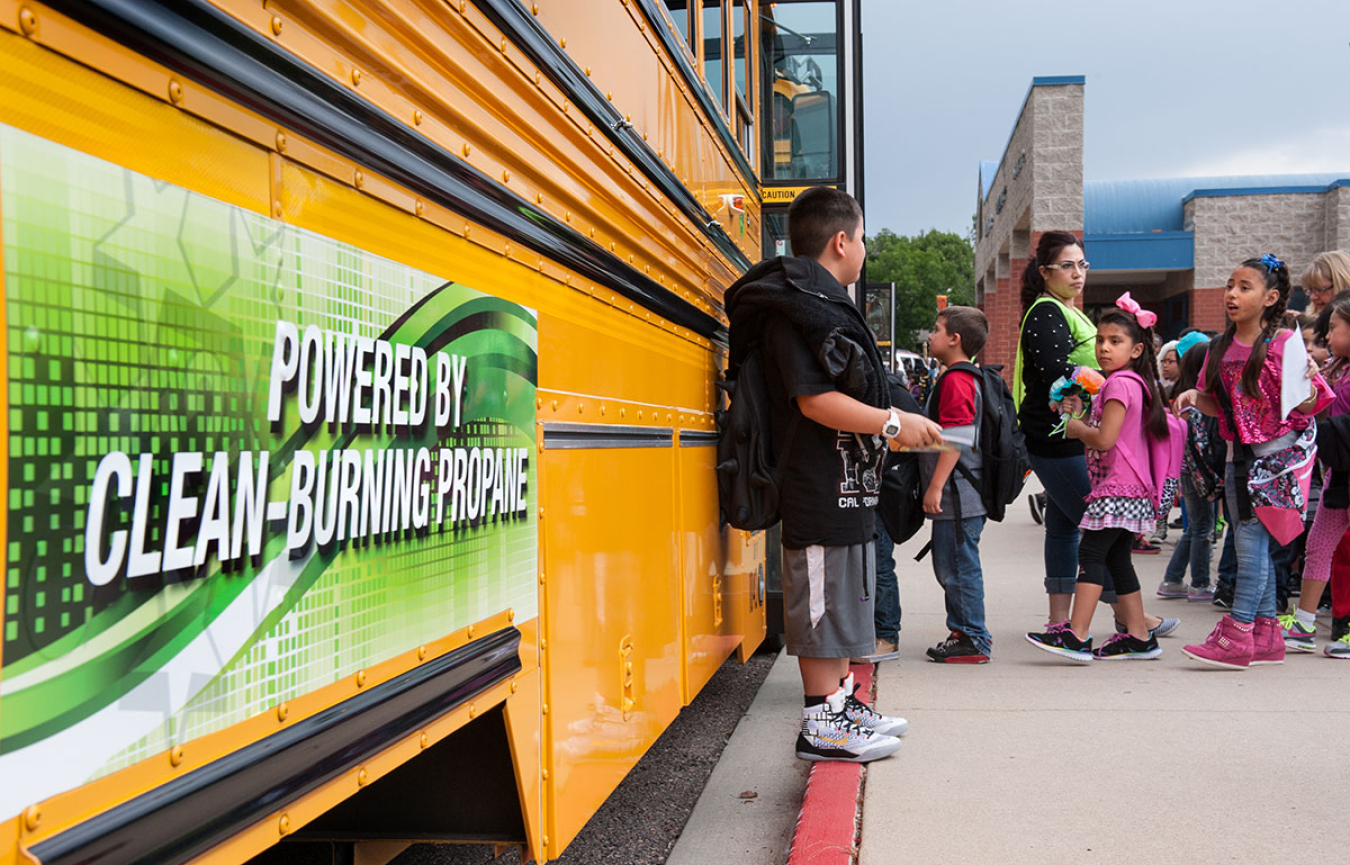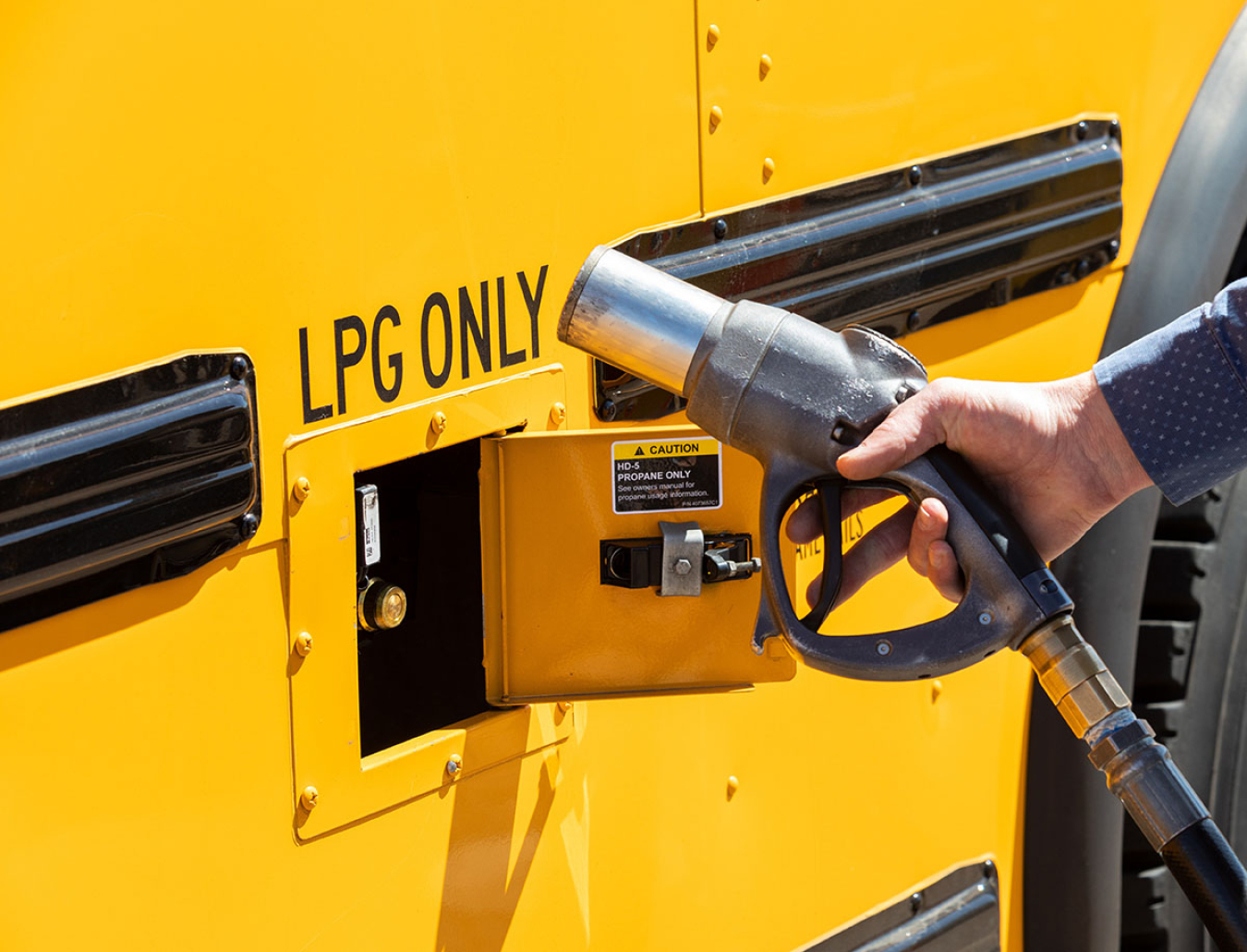Although there are not many schools in the federal fleet, there are plenty of school buses: 7,783 in 2018, many of which are used in military agencies for troop transport.[1] Ryan Texer, fleet manager at Adams County School District 12 headquartered in Thornton, Colorado, has acquired 50 propane buses for his school, including 12 in October 2019.
Adams 12 adopted a sustainability management plan that includes reducing greenhouse gas emissions, but for Ryan, the benefits go far beyond that. "We still have a couple of old diesel buses that are belching black smoke every morning. Getting the kids into cleaner buses is a big priority for me and the district."

While new diesel buses produce fewer local-criteria pollutant emissions, they require extensive treatment systems to clean up the fuel combustion, including particulate filters and exhaust gas recirculation, which leads to more expensive maintenance. Adams 12 spends about $0.70 per mile maintaining Model Year 2013 diesel buses and $0.40 per mile maintaining propane buses from the same model year. "We have avoided a lot of the problems with diesel emission system changes over the past several years by purchasing propane buses," according to Ryan.
The price for propane fuel is considerably lower than diesel. Under new contracts secured by the school district, Adams 12 pays only $0.90 per propane gallon, which is about $1.37 per diesel gallon equivalent. Part of the propane price is, effectively, a lease of the fueling infrastructure. Amerigas provides a 2,000-gallon tank as part of the fuel purchasing contract.
But Adams 12 would like to expand to an 18,000-gallon tank, and Ryan has learned some lessons during this process. The first request for proposals (RFP) received zero bids, and the second received only very expensive bids. After that, Ryan reached out to some national propane representatives who connected him with specialty propane fueling station contacts. Those contacts had been unaware of the initial bids, and Ryan expects the third RFP to draw much more competitive offers.
Along the way, Ryan has learned a lot about propane's peculiarities. For one, the fuel tanks on the buses and the stations require expansion capacity, so the usable fuel capacity is typically around 80% of the rated capacity. Therefore, Adams 12 specifies usable capacity in its bids. In addition, propane vehicles can be geared differently to improve fuel economy, and the buses are now configured to avoid going into a secondary overdrive at subhighway speeds because they lose power significantly in those situations.

Overall, the process has been very positive for Ryan and Adams 12. The best part may be that the district qualifies for Environmental Mitigation Trust grants handled by the Regional Air Quality Council in Colorado, which can make the buses even more affordable than their diesel counterparts. This particular grant program is available to federal agencies. Even without the grants, the approximately $5,000–$10,000 incremental cost can be more than recouped through maintenance and fuel costs over the life of the buses.
According to John Gonzales, a propane gas expert at the National Renewable Energy Laboratory, "Propane buses provide an opportunity for school district fleets to not only reduce their maintenance costs when compared to modern diesel engines, but also to save on fuel costs. This, combined with operating vehicles that have a lower emissions footprint, has been well received by school districts."
[1] Vehicle data is from the Federal Automotive Statistical Tool, 2018 Federal Fleet Report, Table 2-1; https://fastweb.inl.gov/.

